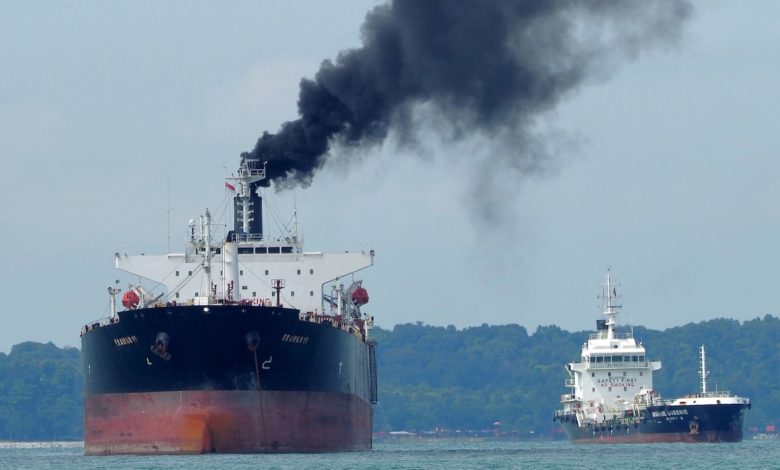The importance of maritime is paramount as the oceans worldwide serve as the main and essential component of international trade, commercial activities and economic growth. Maritime security can be explained in terms of nexus between national, economic, environmental and human security. The phenomenon of climate change has considerably aggravated the problem of maritime security. The rising sea levels (RSLs) and increasing sea surface temperatures have caused an increase in the frequency and severity of extreme weather events, such as coastal floods and cyclones. Such extreme weather events have a strong adverse impact on human welfare and economic stability by disrupting agriculture, aquaculture, and fisheries. This leads to an increase in poverty, inequality, and public discontent with governance. Thus, creating an environment that encourages maritime crime, trafficking, and various illegal survival activities that can compromise security.
The coastal line of Pakistan holds significant strategic importance for the country. Running along the Arabian Sea the Pakistan’s coastline extends over 1,001 kilometers and includes ports such as Gwadar, Karachi and Port Qasim. The RSLs and increased storm intensity due to climate change pose a great threat to Pakistan’s coastal infrastructure, including ports and naval bases. The Mean Sea Level (MSL) is currently experiencing a gradual increase at a rate of approximately 1.1 millimeters per annum calculated using Karachi tide gauge observation data (1856-2000). Based on climate projections the anticipated sea level rise by 2100 is estimated to be between 0.24 m to 0.95 m, 0.39 m to 0.98 and 0.45 m to 1.03 at the Karachi, Ormara, and Gwadar respectively under high emission scenarios
The Arabian Sea presently has witnessed a rise in the frequency and intensity of tropical cyclones, which is strongly associated with the escalation of temperatures in both surface and deeper water layers. RSLs and cyclones have the tendency to drive coastal flooding and erosion, damage infrastructure, loss of mangrove ecosystem and communities’ relocation. The most prolonged cyclone recorded in the Arabian Sea is the Cyclone Biparjoy in 2023. Heavy rainfall and storm surges affected the coastal areas of Karachi and coastal districts of Thatta, Badin and Sujawal. Approximately 80,000 people along the Sindh coastline had to be displaced. Port and shipping lane disruptions by such severe future cyclones can severely impede international trade. The floods in Pakistan in 2022 were another catastrophic climate related disaster that significantly impacted the maritime activities.
Naval assets, platforms, and sensors are also influenced by environmental factors that might be intensified by climate change. This includes alterations in atmospheric density and increased precipitation, which hinder the functionality of Naval Electronic Systems like Radar and Electronic Warfare (EW) etc., thereby impairing situational awareness. Likewise, elevated ocean temperatures alter underwater sound transmission, impacting the efficacy of sonar. A rise in the frequency of maintenance cycles for naval vessels is anticipated as a result of ocean acidification stemming from the surplus of carbon dioxide absorbed by oceans. Pakistan must seriously concentrate on building climate-resilient maritime infrastructure. Moreover, advancement in early warning systems, community preparedness and disaster management approaches for extreme events are some of the areas where more concentration is required. According to the United Nations Sustainable Development Goal (UNSDG)-13 i.e. the Climate Action, implementation of climate change mitigation and adaptation is required to reduce carbon footprints so that the risks and security challenges associated with climate change in the maritime sector can be decreased.
The United Nations Sustainable Development Goal (UNSDG) no: 14 (Life Below Water) aims to the sustainable use of sea, oceans and other marine resources. The main targets under SDG-14 include reducing marine pollution, protection and restoration of ecosystems, sustainable fishing and increase in economic benefits from sustainable use of marine resources. Progress in attaining the SDG-14 by 2030 has been slowed down due to various factors such as overfishing, marine pollution and climate change. However, efforts are being made worldwide to address these factors including establishment of marine protected areas (MPAs), policies to reduce marine pollution and promoting sustainable fishing practices.
According to SGDs Progress Report 2024 from the United Nations, due to overfishing and pollution the sustainability of the fishery resources has been reduced from 90% in 1974 to 62.3% in 2021. This decline in fisheries stocks highlights the need for more effective regulatory frameworks. The increase in oceanic temperatures has caused great concern regarding coral reef ecosystems. As ocean temperatures move in an upward trajectory due to global warming, the percentage and intensity of coral bleaching is likely to intensify. According to UNSGDs Progress Report 2024, the planet is presently undergoing its fourth global coral bleaching event. UNSDGs Progress Report 2022 mentions that there is an increase in the acidity of the oceans threatening marine biodiversity. As this process of absorbing carbon dioxide increases the capacity of oceans to absorb carbon dioxide will diminish. Research conducted in 2021 estimated about 17 million metric tons of plastic entering the oceans worldwide which is expected to double by 2024. Another main source of marine pollution is the flow of nutrient runoff to the oceans causing eutrophication which has increased from 2016 to present as mentioned in the UNSDGs Progress Report 2022.
UNSGDs Progress Report 2024 cited that by May 2024, there is about 29 million km2 of world ocean that represents the marine protected areas (MPAs). The Astola Island situated 39 kilometers east of Pasni, Balochistan, has been designated as Pakistan’s first MPA. In September 2024, Churna Island has been designated ss the second MPA in Pakistan. Both have coral habitat and are labeled as biodiversity hotspot. Reaching the SDG target by 2030 requires an addition of 1.13 million km2 of ocean to MPAs every year. The overall current progress of SDG-14 falls short of what is required to meet by 2030. To efficiently meet the SDG-14, effective implementation and enforcement of conventions and regulations, technological innovation and international cooperation among countries is required.

Aneela Khan
Ms. Aneela Khan is a Doctoral Candidate (Environmental Science/Climate Change) and Research Associate at National Institute of Maritime Affairs (NIMA). The views expressed are her own.
- This author does not have any more posts.













